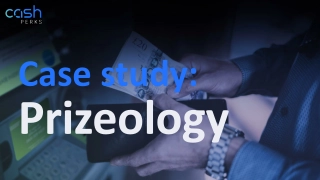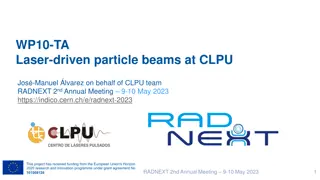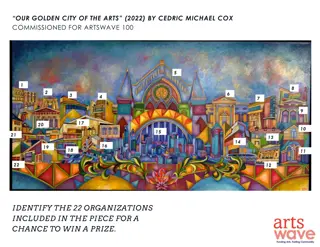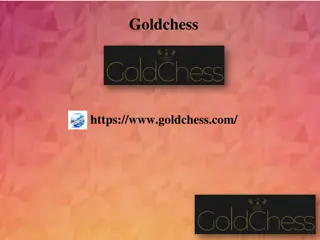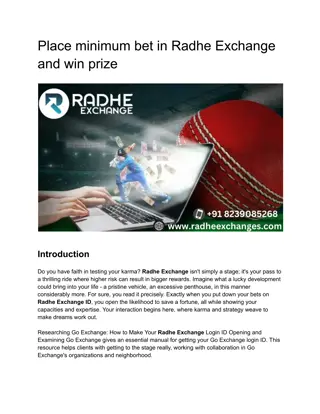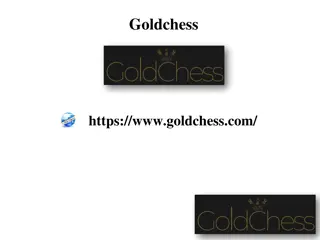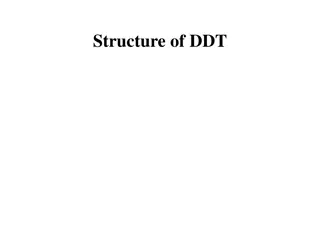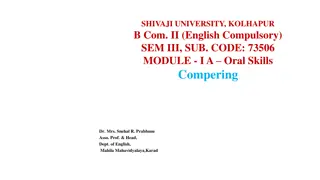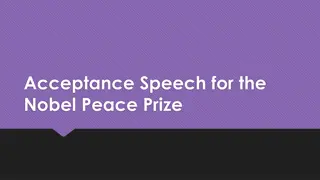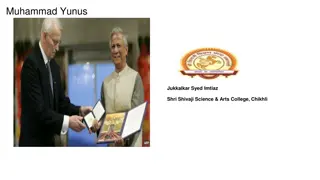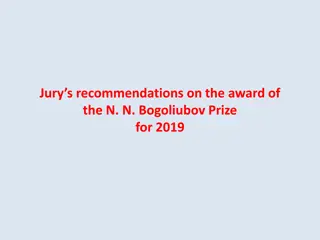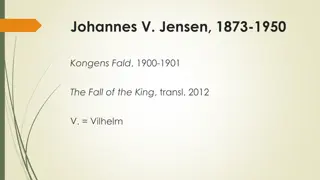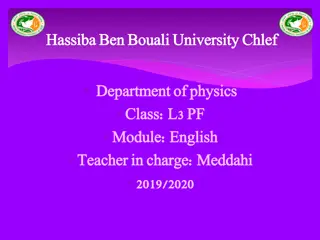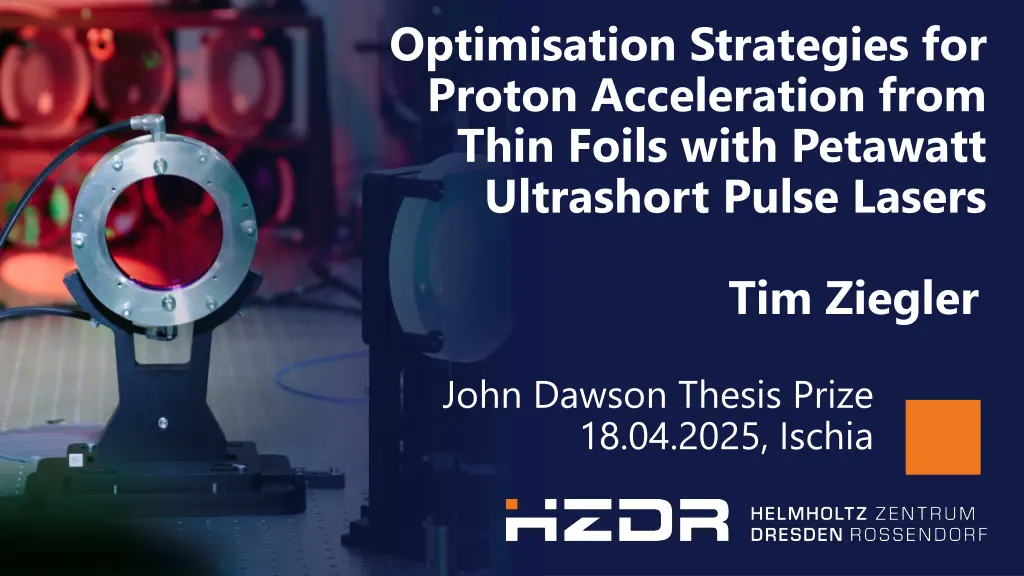
Innovative Strategies for Laser-Driven Proton Acceleration Optimization
Explore cutting-edge strategies for optimizing proton acceleration using petawatt ultrashort pulse lasers from thin foils. Discover the challenges of scaling energy levels despite increasing laser power and the interlink between laser operation, metrology, and experimental benchmarks. Learn the significance of temporal laser-pulse contrast in controlling the acceleration process and improving performance.
Download Presentation

Please find below an Image/Link to download the presentation.
The content on the website is provided AS IS for your information and personal use only. It may not be sold, licensed, or shared on other websites without obtaining consent from the author. If you encounter any issues during the download, it is possible that the publisher has removed the file from their server.
You are allowed to download the files provided on this website for personal or commercial use, subject to the condition that they are used lawfully. All files are the property of their respective owners.
The content on the website is provided AS IS for your information and personal use only. It may not be sold, licensed, or shared on other websites without obtaining consent from the author.
E N D
Presentation Transcript
Optimisation Strategies for Proton Acceleration from Thin Foils with Petawatt Ultrashort Pulse Lasers Tim Ziegler John Dawson Thesis Prize 18.04.2025, Ischia
Thank you for all the support! I am lucky to work with such a great team 2 Ti Tim Ziegler | t.ziegler@hzdr.de | www.hzdr.de
Development of laser-proton acceleration Lasers reporting proton acc. exp. worldwide Proton acc. performance worldwide ~5MeV (Vulcan, 30J) ~85MeV (PHELIX, 200J) ~60MeV (NOVA, >400J) ~67 MeV (Trident, 80 J) >93MeV (Vulcan, 210J) 2018 2000 2011 1994 2016 Nd:Glass Ti:Sa 2009 2012 2016 2002 ~20 MeV (JanUSP, 5J) ~40MeV (J-KAREN, 7.5J) ~93MeV (CoReLS, ~8J) ~13MeV (MBI, 0.7J) 3 Ti Tim Ziegler | t.ziegler@hzdr.de | www.hzdr.de
Scaling problem ! Despite increasing laser power, achievable energies plateaued for more than 10 years! 4 Ti Tim Ziegler | t.ziegler@hzdr.de | www.hzdr.de
Laser-driven proton acceleration at HZDR HZDR U. Schramm, T. E. Cowan, K. Zeil, J. Metzkes-Ng, C. Bernert, F. Kroll, T. P schel, M. Rehwald, M. Umlandt, M. Vescovi, P. Wang, T. Kluge, I. G thel, ... KPSI M. Nishiuchi, H. Kiriyama C. Liu, K. Kondo, A. Kon, H. Sakaki, ICL & JAI N. P. Dover, Z. Najmudin 5 Ti Tim Ziegler | t.ziegler@hzdr.de | www.hzdr.de
Our strength: interlink between laser operation, metrology and experimental benchmarks understand feedback of subtle changes of laser parameters to the accelerator performance 6 Ti Tim Ziegler | t.ziegler@hzdr.de | www.hzdr.de
Temporal laser-pulse contrast as decisive control parameter Laser-induced breakdown [1] [1] C. Bernert, T. Ziegler et al., Phys. Rev. Applied 19, (2023) 7 Ti Tim Ziegler | t.ziegler@hzdr.de | www.hzdr.de
Temporal laser-pulse contrast as decisive control parameter Diagnostic established + contrast improved Laser-induced breakdown (new) T. Ziegler et al., Sci. Reports (2021) Excellent starting conditions for stable acc. process Plasma dynamics restriced to last ps Pulse shape optimisation procedure for enhanced proton acceleration performance (>60MeV) and conversion efficiency (2% 5%) F. Kroll et al., Nature Physics (2022) intensity dependent filter system applied 8 Ti Tim Ziegler | t.ziegler@hzdr.de | www.hzdr.de
Scaling problem ! Scaling problem ! demonstrated ! 9 Ti Tim Ziegler | t.ziegler@hzdr.de | www.hzdr.de
Plasma tailoring for advanced acc. regimes Overdense target Relativistically transparent targets Underdense target ??> ??? ??< ??? ??~ ??? laser mostly reflected laser mostly absorbed laser mostly transmitted ?: laser frequency ? : Lorentz factor ??: critical density ??: electron density (target) ??????? ?? ??= 10 Ti Tim Ziegler | t.ziegler@hzdr.de | www.hzdr.de
Plasma tailoring for advanced acc. regimes ??> ??? ??< ??? ??~ ??? transparent target opaque arget near-critical density skindepth interaction propagation/volumetric plasma density pre-expansion by preceding light foil 11 Ti Tim Ziegler | t.ziegler@hzdr.de | www.hzdr.de
Transparent targets yield highest energies Maximum proton energy Transmitted light Experiments reveal optimal target thickness: targets get relativistic transparent during main pulse interaction enhanced proton energies increase in transmitted light simulations confirm exp. results N. Dover & T. Ziegler et al., Nature Light (2023) 12 Ti Tim Ziegler | t.ziegler@hzdr.de | www.hzdr.de
Experimental setup DRACO-PW EL = 22.4 J (on target), = 30 fs F/2.3 OAP 2.3 m (FWHM) Ipeak = 6.5 x 1021 W/cm (a0=55) targets: 250 25 nm Formvar foils 13 Ti Tim Ziegler | t.ziegler@hzdr.de | www.hzdr.de
Proton energies >100MeV ! T. Ziegler et al., Nature Physics (2024) TPS45 TPS15 one component exp. decay up to ~60MeV no high-energy component two components (bi-modal) exp. decay up to 15-40MeV separated high-energy component up to 150MeV 14 Ti Tim Ziegler | t.ziegler@hzdr.de | www.hzdr.de
3D PIC sims reveal a cascade of acc. regimes Simulation data Experimental data multiple mechanisms contribute to energy gain: FrontSide Acceleration (FSA) prompt electrons thermal sheath Coulomb Repulsion (CR) acceleration cascade T. Ziegler et al., Nature Physics (2024) 15 Ti Tim Ziegler | t.ziegler@hzdr.de | www.hzdr.de
Promising scaling with laser energy proton energies at 15 scale much faster with laser pulse energy different acc. mechanisms relative amount of trans. light seems to be unaffected ideal observation/control parameter T. Ziegler et al., Nature Physics (2024) 16 Ti Tim Ziegler | t.ziegler@hzdr.de | www.hzdr.de
Scaling problem ! demonstrated ! Scaling problem ! demonstrated ! surpassed ! T. Ziegler et al., Nature Physics (2024) 17 Ti Tim Ziegler | t.ziegler@hzdr.de | www.hzdr.de
Summary diagnostic & operation principles established [1] controlled interaction conditions Optimisation strategies for proton acceleration from thin foils with petawatt ultrashort pulse lasers stable beam generation >60MeV [2,3] accelerator readiness reached new energy record of 150MeV in novel regime [4] control needed [1] T. Ziegler et al., Sci. Reports 11, 7338 (2021) [2] F. Kroll, T. Ziegler et al., Nature Physics (2022) [3] N. Dover & T. Ziegler et al., Nature Light (2023) [4] T. Ziegler et al., Nature Physics (2024) 18 Ti Tim Ziegler | t.ziegler@hzdr.de | www.hzdr.de

